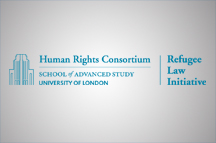Why, more than 60 years on, is there still no agreed definition of the term “being persecuted” within Article 1A(2) of the 1951 Refugee Convention? In this talk, based on an article in a forthcoming book , I will argue that the time is long overdue for attempting a working definition. Upon analysis, the warnings voiced by the drafters and others against defining persecution only constitute a valid criticism of certain approaches to definition; and, indeed, it will be argued that much of the groundwork for a valid working definition has already been done; and, as a result of Directive 2004/83/EC (the Refugee Qualification Directive (QD)), there is now for the first time a template that can be taken as a starting-point for a universal definition.
It will be argued that there is a need to develop a multi-faceted systematic approach to defining persecution, clarifying first the various modalities of persecution, so as better to understand who does what to whom, how, why and where. It is argued that it is time to recognise that, pace UNHCR, there is no respectable alternative to a human rights approach. Adopting a human rights approach it is argued that a short definition of persecution can be given using Article 9 of the QD as a start-point, bearing in mind that such a definition allows for further development.
In developing a systematic approach to defining persecution regard is had to (i) its temporal dimensions and the rationale for the concept of current fear; (ii) its material scope, again by reference to the globally significant enumeration within Article 9(2) of the QD in a non-exhaustive fashion of various “acts of persecution”. Certain additions are suggested, including that persecution can take the form of socio-economic harm. Attention is given to developments in the understanding of specific forms of persecution, e.g. gender-specific, LGBTI-specific, child-specific and disability-specific forms of persecution in particular. It is emphasised that whilst such developments have enriched and sharpened understanding of different forms of persecution, they do not alter its underlying definition.
Next, various aspects of (iii) the personal scope of the term “persecution” are examined, with particular emphasis on the progress that has been accomplished in clarifying the concept of “well-founded fear”.
Taking stock of all the developments that have taken place in refugee jurisprudence over the past 60 years, the conclusion drawn is that it is now possible to say a great deal about what persecution consists in and to set out a working definition. Doing so illustrates just how many misunderstandings and shibboleths have been overcome. I will offer a summary of the basic propositions that make up a working definition of persecution, although it is emphasised that there is considerable room for refinement, correction and further elaboration.
Discussants:
- Dr David Cantor Refugee Law Initiative, University of London
- Dr Violeta Moreno-Lax Queen Mary, University of London
Speaker:
Dr Hugo Storey is Senior Judge in the Asylum and Immigration Chamber, United Kingdom Upper Tribunal. He has conducted extensive research into different aspects of refugee law and is widely published in this field.












